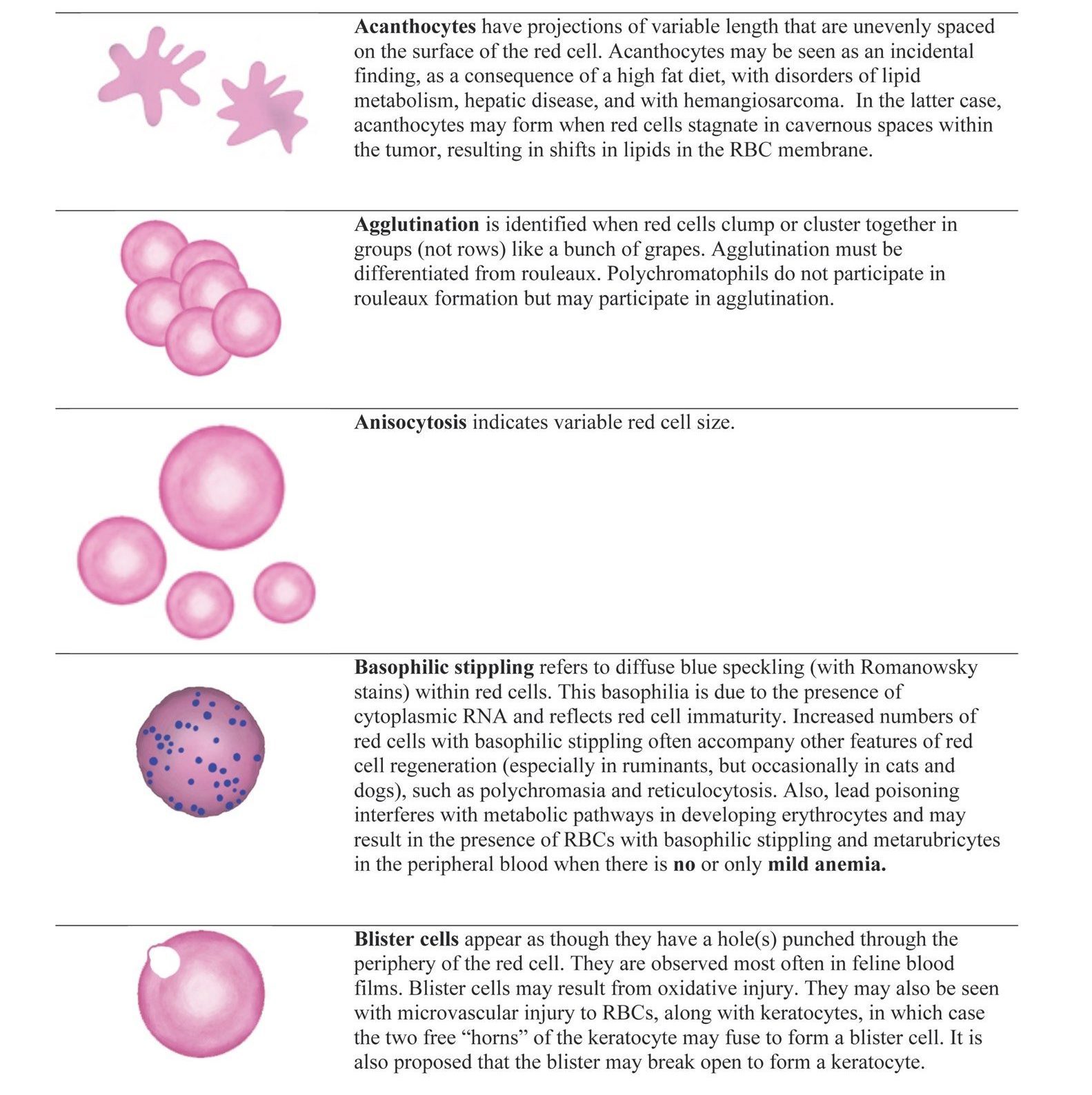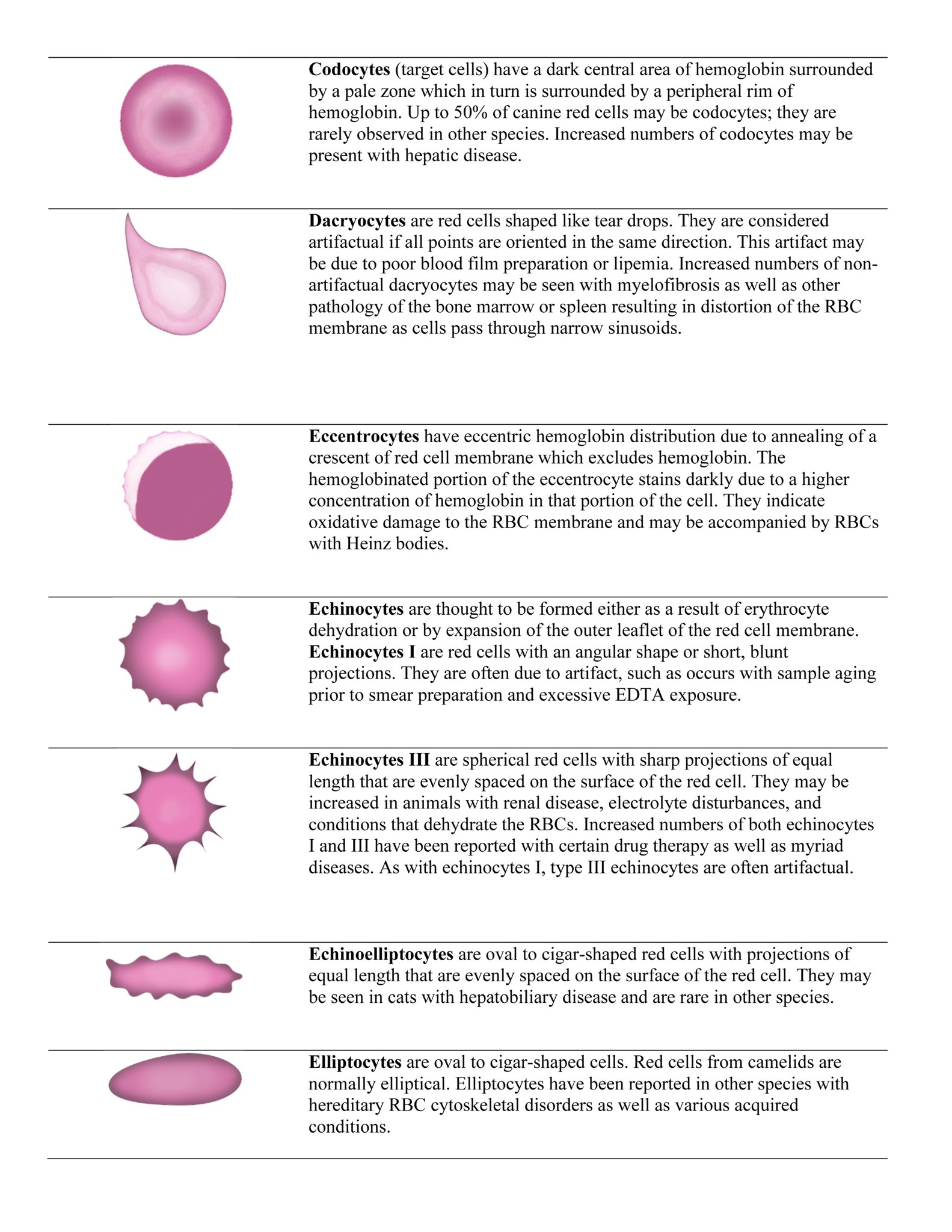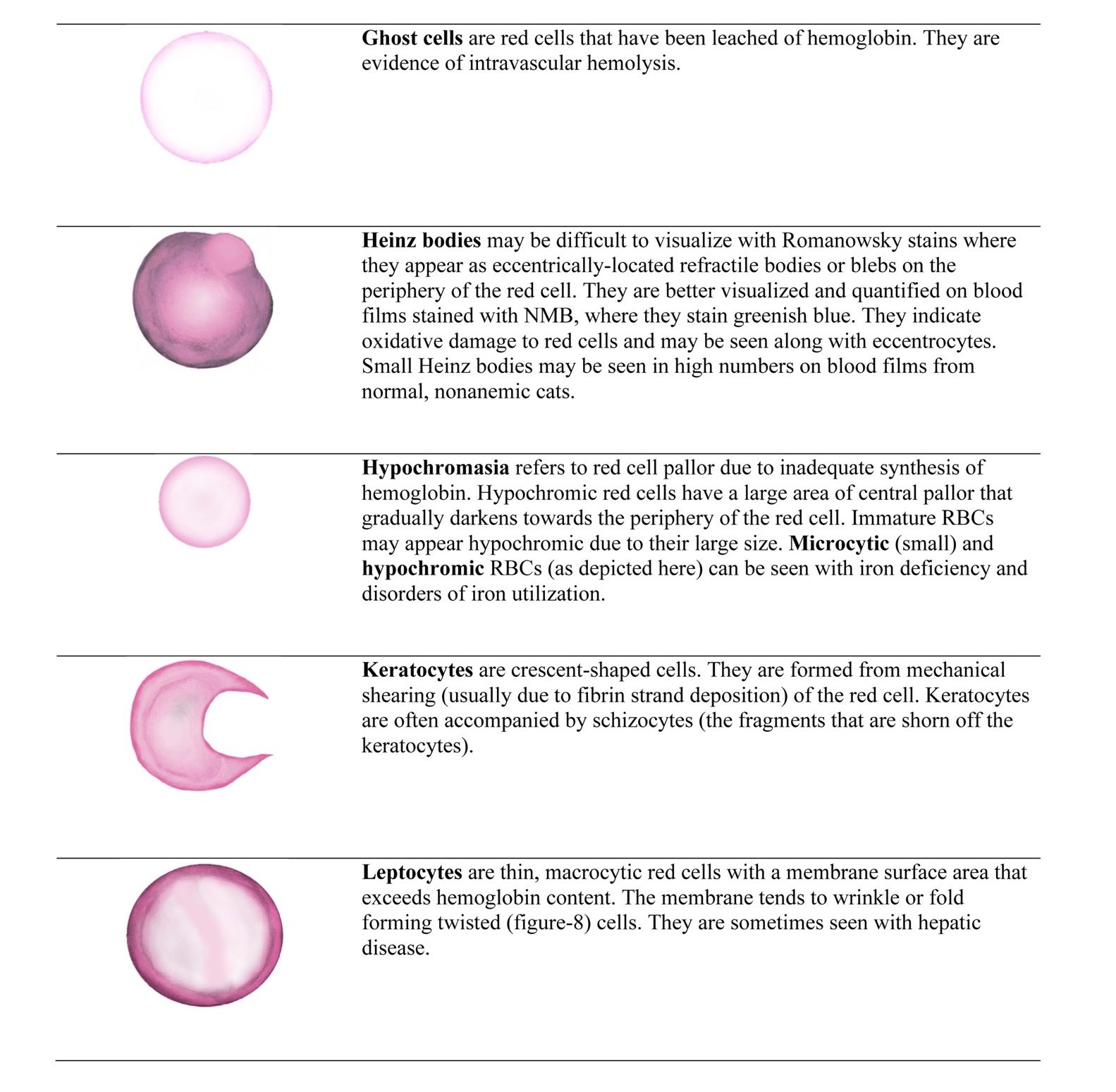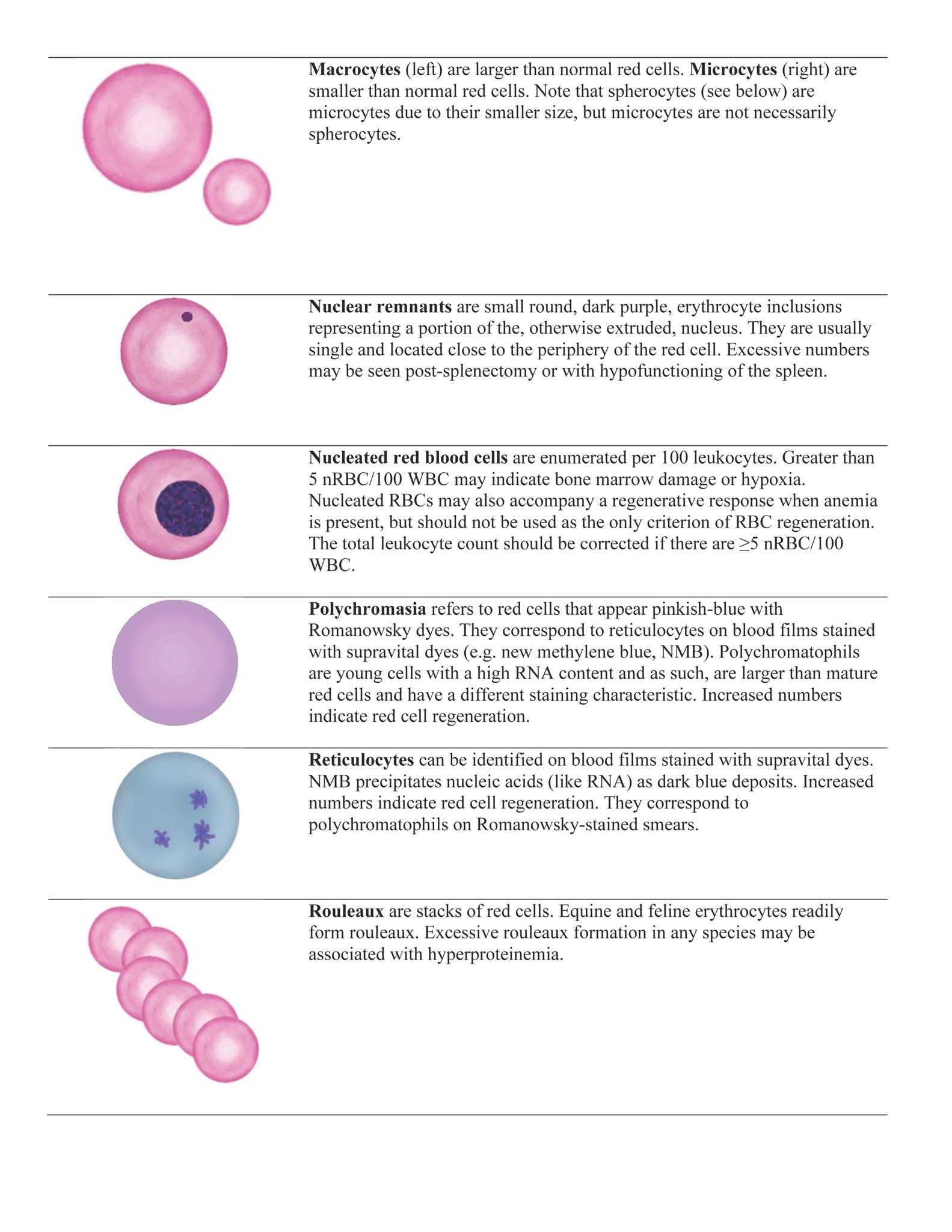Erythrocyte Morphology
In the common domestic animals, mature erythrocytes are anucleate biconcave disks which are highly deformable, allowing them to travel through small capillaries and deliver oxygen to tissues. Erythrocyte aging and certain pathological conditions can cause RBCs to assume unusual shapes which may result in increased rigidity. Rigid RBCs are susceptible to mechanical injury and are less effective in delivering oxygen. Exposure to stagnant environments (pooling of blood in a cavernous, hypoxic space), certain serum biochemical abnormalities, antibody-mediated membrane injury, and mechanical injury can alter the normal biconcave shape. Sometimes, RBC morphologic changes are associated with specific diseases or conditions, but the mechanism of the shape change is not always clear. See Table 1.1 for diagrams of various types of RBC morphology.





